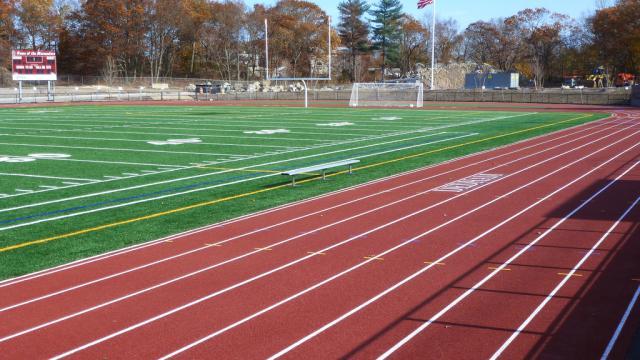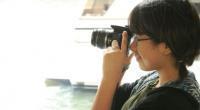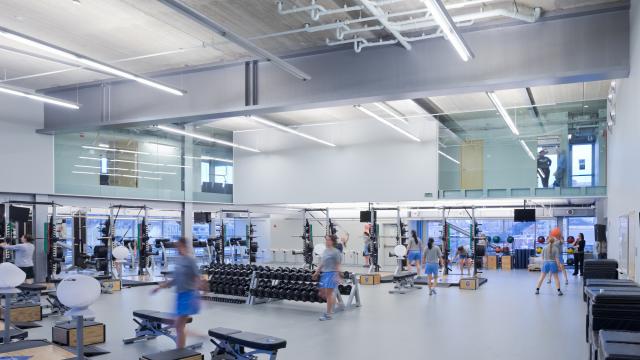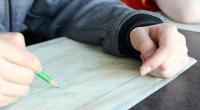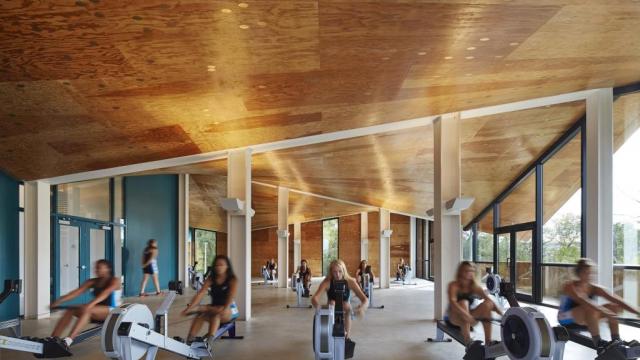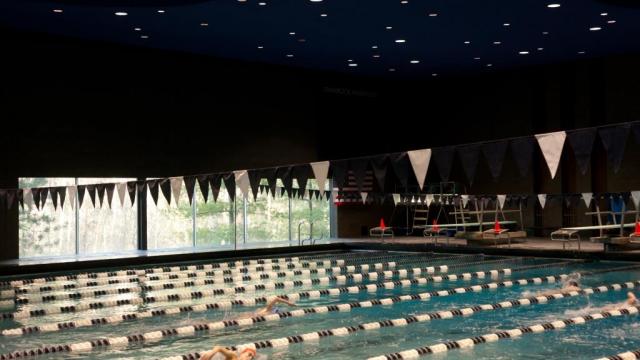
Redesign Your School Athletic Pavilion | 2014 National High School Architecture Competition #174
Demolishing the current gym at A-TECH and constructing a new building seems to be the best option for creating a better athletic pavilion for the school. The current gym was built in the year 2000 when A-TECH a new school with a very low student body fewer than 1000 students. Today, A-Tech’s student body has grown substantially and the current gym does not meet the requirements to facilitate the physical education department of the school. Changes needed to be made include having larger locker rooms to facilitate the student’s needs, better seating arrangements in the gymnasium, and better layout of the class rooms and workout rooms. In the current state of the gym, the lack of lockers has made of problem for the school forcing physical education students to use a portable classroom as another locker room. The school’s gym is also used for the schools assemblies but it still lacks the seating arrangements for all students to have a seat. Over a hundred fold-able chairs are used each assembly because the bleachers lack the space to house more students. The Gym also holds two classrooms on its premises including a health classroom and a weight lifting room for the convenience of having the entire health/physical education department in the same premises of campus. Next to the Gym is also a portable used for Band and Orchestra classes which can be easily integrated into the new building’s design.
I plan on having my design utilizing all of the available space located behind the current gym of the school which is never used. With this newly attained space there would be room to integrate another classroom/theater for the band/orchestra classes so the portables besides the gym can be eliminated entirely. The new design of the gym would include having the boy’s and girl’s locker rooms better designed and planned where showers will not be built inside of them like the current one. Showers are not used in Physical Education and so they are waste of resources to construct and I plan on constructing what is definitely needed to make an improved athletic pavilion. Maintaining the Health class room with the athletic pavilion seems like a favorable idea because it does coexist with the education department of Physical Education and Health.
The classroom would be placed near the front entrance of the gym because it would be more convenient for students to find their way out of the building so they can arrive on time to their next class which was a major problem for the students at A-TECH with such a short passing period. The weightlifting room would be placed on the west side of the building with windows which would better the environment. The current weight room is located in the on the east side of the building which was a design flaw because it had glass box windows and the Sun in the morning constantly made the weight lifting experience much difficult for students due to the bad lighting environment of the room. The Band/Orchestra room can be integrated by adding another classroom to the side of the Gym allowing for a more spacious experience for band and orchestra students where now they have to work in crowded condition in the portable.
On the new basketball court, bleachers will then be placed on both sides of the sidelines allowing to double the amount of seating that there was originally was. This would solve the seating problem for the school assemblies which might allow there to be only one assembly instead of two due to the fact the new gym will be able to facilitate all of the students at the school. Acknowledging the fact that A-TECH is a technology majoring high school and not an athletic high school, my new design of the Sports Pavilion will make the lives of the students on campus more convenient and will create a better reputation for the physical education and even the musical department better for A-TECH.

